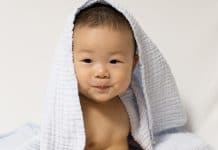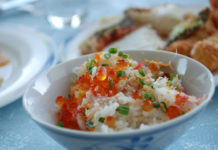The Lunar New Year (or Asian New Year) is the most celebrated holiday of the year across many Asian countries. On the first day of the first new moon after the winter solstice in the lunar calendar (January 23, 2012), countries like Korea, Taiwan, China, Vietnam and Asian communities in many Western countries will celebrate the New Year. The New Year flushes out the old and welcomes in the new, making space for happiness, wealth, luck and longevity. It’s a time to spend with friends and relatives and stresses the importance of family ties.
In the days before the New Year, people begin “spring” cleaning. The old is swept away to clear room for the coming year’s good fortune. In Vietnam, people decorate their homes with flowers like chrysanthemum and marigolds, as well as a New Year tree, called cây nêu, which is a bamboo stick five to six meters long. The top end is usually decorated with many objects, such as good luck charms, origami fish, cactus branches and others. Preparations for the New Year can begin up to weeks before as people begin to anticipate the holiday.
New Year’s Eve is a time for feasting with family and friends and many traditional foods are eaten such as yuanxiao (sweet, stuffed rice balls) in China, bánh chưng (steamed sticky rice with pork) in Vietnam and tteokguk (soup with sliced rice cakes) in Korea. After dinner, people await the fireworks at midnight to scare away evil spirits and bad luck. Lights are supposed to be kept on all night.
The next morning, or sometimes the evening before, children receive money in red envelopes as a present. On New Year’s Day, everyone wears new clothes, usually red in China or red and yellow in Vietnam, symbolizing a fresh start. In Korea, people dress in traditional clothing, called hanbok. It is believed that whatever happens on the first day of the new year will foretell what the year will be like, so children are not allowed to cry, parents are not allowed to scold their children or else they will do so all year.
In China, the celebration last for two weeks, during which time people visit one another and exchange gifts. It is a great time for reconciliation. Old grudges are forgiven. The atmosphere is warm and friendly. The entire celebration culminates on the 15th day in the Lantern Festival, where people parade different lanterns in animal shapes or with poems written on them into the streets.
This year, 2012, is the year of the dragon, which is a very special one. In Chinese astrology, years correspond to different animal signs, which repeat in 12-year cycles. In former times, the animal signs helped people keep track of their age and figure out who was older or younger. The year of the dragon is anticipated to be exciting, unpredictable, exhilarating and intense. People born in the year of the dragon are said to be passionate, charismatic and self-assured, and tend to be natural leaders.
For a more detailed account of the holiday, from which some of this description was taken with permission, please visit Frances Kai-Hwa Wang’s article at IMDiversity.com: http://www.imdiversity.com/villages/asian/family_lifestyle_traditions/lunar_new_year/wang_new_year_kids.asp


































